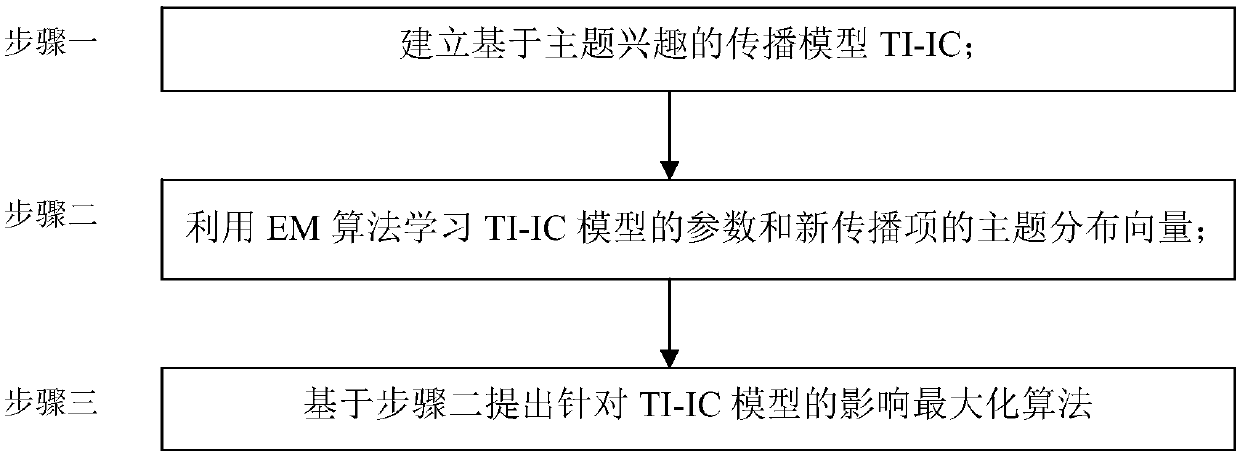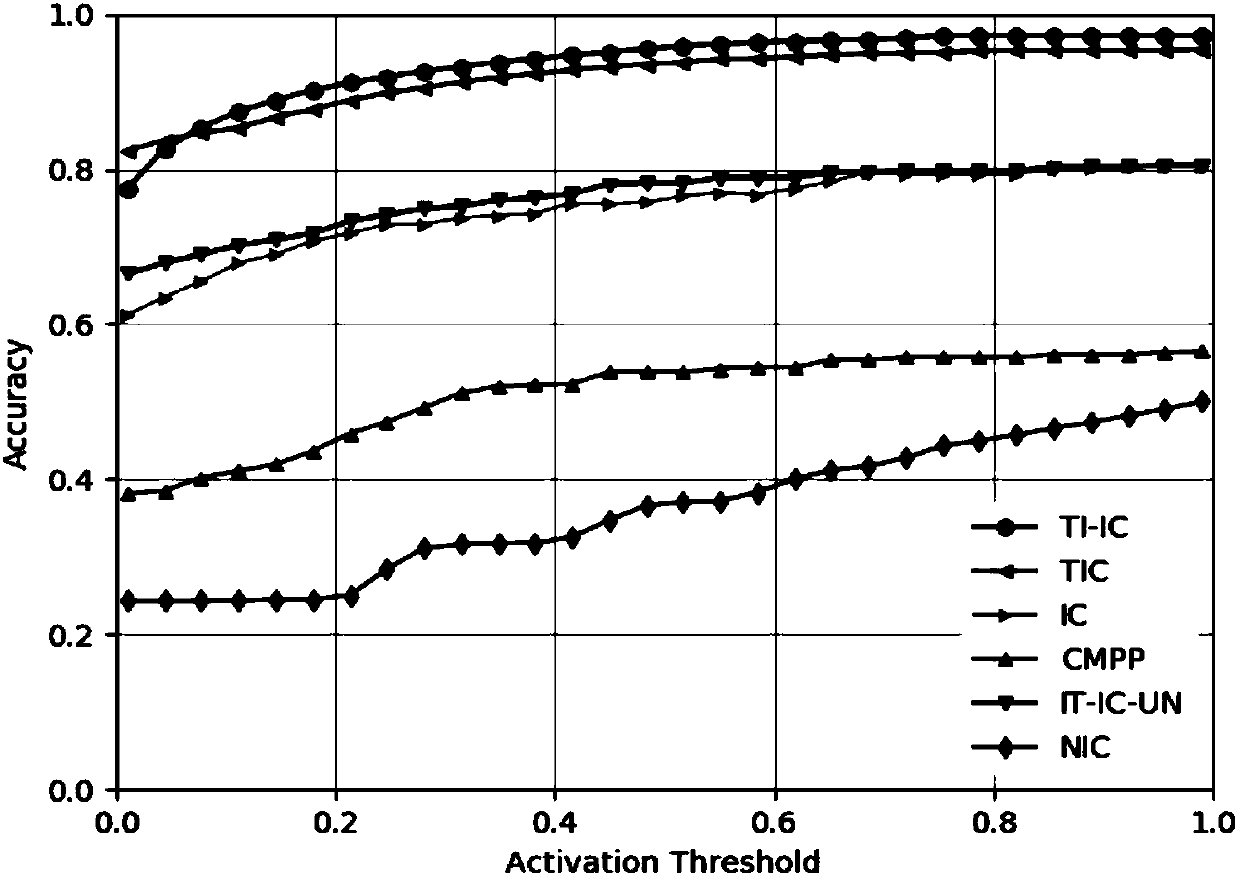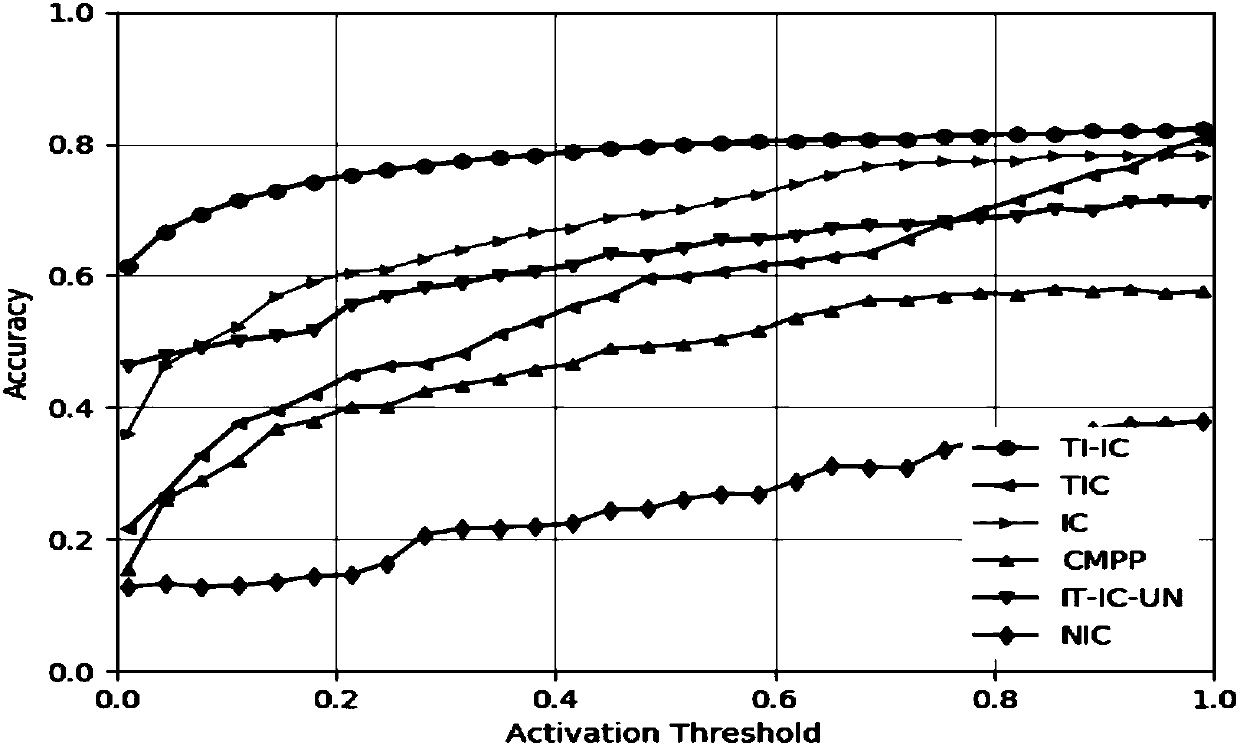Influence maximization method in social network and based on theme interest
A technology of maximizing influence and social network, applied in special data processing applications, instruments, electrical digital data processing, etc., it can solve the problem of not considering the characteristics of propagation items, the TIC model does not take into account the distribution of user interests, and cannot accurately describe information propagation. issues of laws
- Summary
- Abstract
- Description
- Claims
- Application Information
AI Technical Summary
Problems solved by technology
Method used
Image
Examples
specific Embodiment approach 1
[0081] Specific implementation mode one: combine figure 1 Describe this embodiment, the specific process of the influence maximization method based on topic interest in the social network of this embodiment is:
[0082] Step 1. Establish a communication model TI-IC based on topic interest;
[0083] The present invention introduces the topic interest based propagation model TI-IC. The TI-IC model is an extension of the IC model, assuming that there is a topic distribution for each communication item and an interest distribution for each user. The present invention introduces the topic interest based propagation model TI-IC. The TI-IC model is an extension of the IC model to mix topics in each spread item and user. For example, a movie may contain the following basic themes: comedy, love, action, etc., and a user also has an interest distribution, such as 0.6 for comedy, 0.1 for romance, and 0.1 for action movies. The degree of liking is 0.3.
[0084] Given a social network...
specific Embodiment approach 2
[0148] Specific embodiment two: what this embodiment is different from specific embodiment one is: utilize EM algorithm to learn the parameter of TI-IC model in described step 2, obtain the output of EM learning algorithm, namely the parameter Θ of TI-IC model, Θ include with The specific process is:
[0149] Step a) Initialize with a normal distribution with a mean of 0 and a variance of 0.01 π z ; z ∈ [1, Z], u ∈ V;
[0150] π z Indicates the prior probability of all propagation items i on topic z;
[0151] Step b) For all propagation items i and topics z, calculate (EM algorithm E step);
[0152] Step c) For all topics z, calculate (EM algorithm M steps)
[0153] Step d) For all topics z and users u, calculate (EM algorithm M steps);
[0154] Step e) repeatedly execute step b) to step d), until convergence;
[0155] Step f) output with
[0156] That is, the output Θ of the EM learning algorithm is obtained, and Θ includes with
[0157] The pseudo...
specific Embodiment approach 3
[0164] Specific implementation mode three: the difference between this implementation mode and specific implementation mode one or two is: when a new propagation item i appears in the step 2, the topic distribution vector of the new propagation item i is solved The specific process is:
[0165] When a new propagation item i appears, the following method is used to solve the topic distribution vector of the new propagation item i Minimize the following objectives;
[0166]
[0167] For the above optimization objective, use the gradient descent algorithm to solve; The specific solution process is:
[0168] Step S1) Initialize with a normal distribution with a mean of 0 and a variance of 0.01
[0169] Step S2)
[0170] Step S3) repeatedly execute step S2), until convergence;
[0171] Step S4) output
[0172] where λ is the learning step size;
[0173] The specific solution process is shown in Algorithm 2, Algorithm 2: Algorithm for learning new propagation it...
PUM
 Login to View More
Login to View More Abstract
Description
Claims
Application Information
 Login to View More
Login to View More - Generate Ideas
- Intellectual Property
- Life Sciences
- Materials
- Tech Scout
- Unparalleled Data Quality
- Higher Quality Content
- 60% Fewer Hallucinations
Browse by: Latest US Patents, China's latest patents, Technical Efficacy Thesaurus, Application Domain, Technology Topic, Popular Technical Reports.
© 2025 PatSnap. All rights reserved.Legal|Privacy policy|Modern Slavery Act Transparency Statement|Sitemap|About US| Contact US: help@patsnap.com



